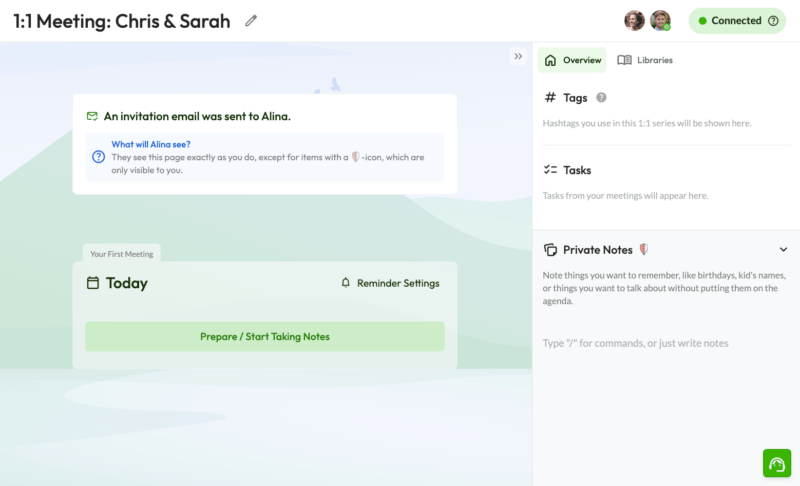In the agile world, Scrum Masters are relatively often faced with the challenge of effectively managing more than 2 teams. Isn't that too much? How many Scrum Masters on how many teams makes sense? We discuss this below.
Basically, mastering this task requires clear strategies and adaptability. Find out in this article how you can successfully lead and support multiple teams as a Scrum Master.
How many teams should a Scrum Master have | Scrum Masters per team
How many agile teams should a Scrum Master have?
Imagine you are Scrum Master for four teams – would that be too much? Most probably yes.
The ideal number of teams that a Scrum Master should coach varies depending on various factors such as the size and complexity of the organization, the experience of the teams and the Scrum Master as well as the specific requirements of the project. In the Scrum literature, one can indirectly read that the recommendation is to assume a maximum of 2 teams per Scrum Master as a reasonable ratio.
This recommendation is based on the assumption that the personal interaction and support provided by a Scrum Master may decrease as the number of teams increases. If a Scrum Master supports multiple teams, it is important to ensure that he/she establishes effective communication and coordination mechanisms to address the needs of all teams. Even or especially if you are a Scrum Master for four teams, this advice is important.
It is important to note that the role of a Scrum Master is not limited to coaching teams, but also to supporting the entire organization in the implementation of agile practices (even if this usually takes a back seat and is not the first priority). Therefore, the exact number of teams coached may vary from organization to organization. It is advisable to assess the situation on the ground and adjust the number of supported teams accordingly. Some also mistakenly ask how many Scrum Masters per team is reasonable – but of course normally not more than one Scrum Master should coach a team, but at most one.

How many teams should a Scrum Master have | Scrum Masters per team
Tips for Scrum Masters with multiple teams
If a Scrum Master is in charge of more than two teams, this can be a challenging task. It therefore requires effective organization and prioritization of tasks. Here are some tips for Scrum Masters managing multiple teams:
Efficient communication: Make sure you establish clear and efficient communication channels to stay well informed and ensure that teams can communicate with each other. Use digital tools, regular meetings and other means of communication to share information effectively.
Delegation of tasks: Identify tasks that can be taken on by other team members or Scrum Masters and delegate these tasks to distribute the workload. This could include, for example, organizing retrospectives, training or monitoring metrics.
Standardization of processes: Implement standardized processes and practices across all teams to promote consistency and make work easier. This can include the introduction of common tools, definitions of workflows and the use of standardized metrics (such as team satisfaction).
Prioritization as required: Identify the teams' most urgent needs and focus on prioritizing these issues. Set clear priorities and work on the challenges that have the greatest impact on the teams.
Promote self-organization of the teams: Encourage the teams to act autonomously and solve problems independently. A self-organized team structure can reduce the burden on you as Scrum Master, as the teams take on more responsibility.
Use agile principles for your workflow: Apply agile principles to your own work as a Scrum Master. For example, use the agile approach of continuous improvement to increase your own effectiveness.
Training and mentoring: Invest time in training and mentoring team members and other Junior Scrum Masters. The better the teams are able to organize themselves and solve problems, the less direct support they need.
Promote cross-team collaboration: Create opportunities for teams to collaborate with each other and share knowledge. This can take the form of community-of-practice meetings, joint retrospectives or regular joint events. The teams can learn from each other and share best practices.
Use effective tools: Use tools that support collaboration and communication between teams. Virtual tools for project management, communication and collaboration can help to manage information centrally and facilitate exchange.
Clear roles and responsibilities: Make sure that all team members have clear roles and responsibilities within their teams. This not only helps with self-organization, but also allows you as a Scrum Master to focus on more strategic tasks.
Regular retrospectives: Schedule regular retrospectives to review the effectiveness of your care and support. Take time for reflection and improvement to ensure that you focus on the most important aspects.
Consider scaling frameworks: If the number of teams you manage continues to grow, it may make sense to consider scaling frameworks such as SAFe (Scaled Agile Framework) or LeSS (Large-Scale Scrum). These frameworks provide structures and practices specifically designed for scaling agile principles at the organizational level.
Remember that the challenges of managing multiple teams lie not only in organization, but also in your personal time management and communication skills. Flexibility, adaptability and a continuous willingness to learn are crucial factors for your success in such a role.
How many teams should a Scrum Master have | One Scrum Master for several teams
How many teams should a Agile coach have?
The Scrum Master to Teams ratio can also be compared with the Agile Coach to Teams ratio. If you have a good understanding of this, you can also answer the question: How many Agile coaches do I actually need for my agile transformation?
The number of teams that a Agile Coach supervises can vary depending on various factors, similar to a Scrum Master. However, there are no fixed rules or standards that dictate exactly how many teams a Agile Coach should supervise. The optimal number depends on various factors, including
Size and complexity of the organization: In larger and more complex organizations, it may be necessary for a Agile Coach to support more teams, as the need for agility and transformation support is greater.
Experience of the Agile coach: An experienced Agile coach may be able to support more teams effectively than someone with less experience. Experience plays an important role in the ability to understand and support different teams in their agile journey.
Type of coaching activities: The type of coaching activities can also have an impact. A Agile coach who focuses on training, workshops and strategic planning could potentially coach more teams than someone who focuses heavily on individual team dynamics and conflict resolution.
In practice, in my experience, it can be said that a Agile coach should not directly supervise more than two to five teams to ensure that there is sufficient time for each team support. However, it is important to note that this is not a hard and fast rule and that the situation may vary depending on the factors mentioned above. A Agile coach should be able to assess the needs of the organization and teams and adjust accordingly.
I have also seen this more often: There is one Agile coach for every 100 people and the Agile coach is requested by teams according to the pull principle so that the resources are distributed sensibly in a natural way. In this respect, the question "How many Agile coaches do I need?" can only be answered well depending on the factors already mentioned.
You may also be able to reduce the number of Scrum Masters or Agile Coaches you need if you use the right tools, which brings us to the next section.

How many teams should a Scrum Master have | One Scrum Master for several teams
A tool for Scrum Masters with multiple teams
If you feel you have to manage too many teams at the same time, then the Echometer tool is of interest to you. It focuses on simplifying the continuous improvement of teams – especially for teams that do not have a dedicated full-time Scrum Master.
Echometer is a digital tool that helps agile team leads with agile retrospectives and team Health Checks. Whether remote, hybrid or on-site: it makes team coaching measurable and professionalizes your work while saving you a lot of work. Just take a look at our website to find out more: www.echometerapp.com.
"If you have too many teams, let tools like Echometer help you: Which teams are unhappy with what? Then you can start there!"
Christian Heidemeyer, Psychologist & Scrum Master
How many teams should a Scrum Master have | Scrum Masters per team
Conclusion - How many Scrum Masters per team
In short, 2 teams per Scrum Master are appropriate. Unfortunately, this is often not fully taken into account in practice.
Managing multiple teams requires a balance of efficient communication, smart resource prioritization and the promotion of self-organization. With the right practices, Scrum Masters can create an agile environment where teams can thrive and contribute to success together.
Finally, another quick hint: If you would like to know how it feels to develop your team with our tool: You can start an agile retrospective below without logging in, in this case the "Keep, Stop, Start" workshop.
Alternatively, simply forward our website to the responsible colleagues: www.echometerapp.com.







